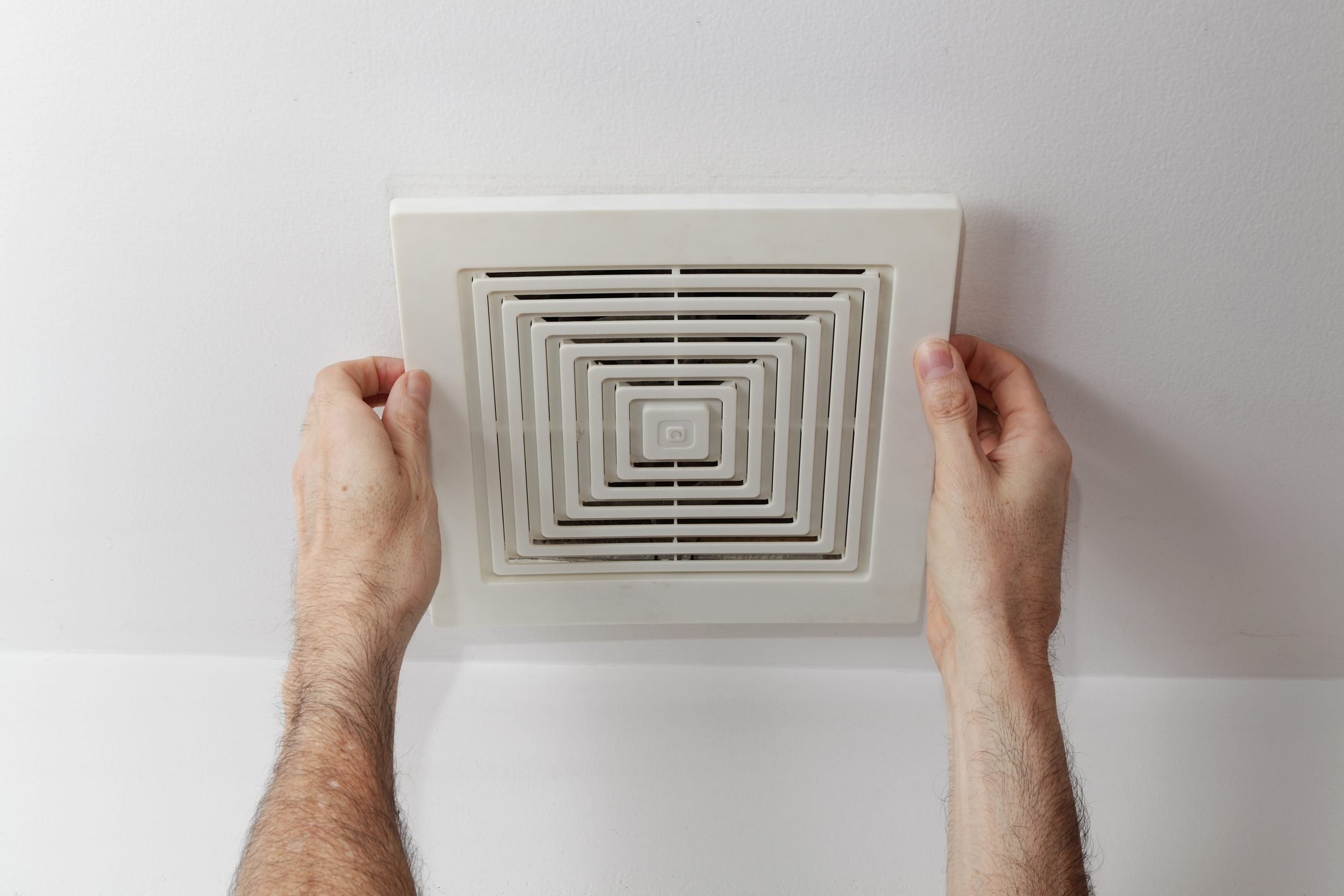What To Know About Bathroom Exhaust Fans
Bathroom exhaust fans are an important part of any bathroom, as they help to keep the space ventilated and reduce moisture and humidity buildup. Not only do they keep the air fresh, but they also help to reduce mold and mildew growth. Knowing the basics of bathroom exhaust fans can help you choose the right one for your space and ensure that you get the most out of it. This article will provide an overview of what you need to know about bathroom exhaust fans.
Advantages of Installing a Bathroom Exhaust Fan
The advantages of installing a bathroom exhaust fan in your home are numerous. Not only does it help reduce humidity and odors, but it can also help to reduce the risk of mold and mildew growth. Furthermore, it can help improve air quality and reduce the amount of dust and pollen in a room. Additionally, a bathroom exhaust fan can help reduce energy costs by helping to remove hot air from the room, which helps to keep the room cooler. Lastly, it can help to reduce noise from running water, making for a more peaceful bathroom experience. Installing a bathroom exhaust fan is a great way to improve the air quality of your home and reduce your energy bills.
Factors to Consider When Choosing an Exhaust Fan
Choosing the right exhaust fan for your home or business is no easy task. You need to consider the size, noise level, efficiency, and installation area of the fan. Size is important to ensure the fan is powerful enough to remove the air in the space, and noise level is important to maintain a comfortable environment. Efficiency is important to ensure the fan is running at peak performance, and the installation area is important to ensure the fan is installed in the correct location. Taking all of these factors into consideration can help you make an informed decision and get the best exhaust fan for your needs.
Types of Exhaust Fans
Exhaust fans are essential appliances found in many homes and businesses and come in a variety of styles and sizes. There are different types of exhaust fans, each offering different levels of performance and features. The most common types of exhaust fans are ceiling or wall-mounted, inline, and through-the-wall. Ceiling and wall-mounted fans are mounted directly to the wall or ceiling and offer efficient ventilation and air circulation. Inline fans are installed in the ductwork and provide maximum air circulation. Through-the-wall models are designed to fit through an exterior wall and offer a more permanent solution than other types. Regardless of the type of exhaust fan you choose, it’s important to select one that is the right size for your space.
Determining the Right Size for Your Fan
When it comes to selecting the right ceiling fan size for your space, it’s important to consider the size of the room, the height of your ceiling, and the style of the fan. While bigger fans may look great, you don’t want one that’s too large for the space, as it won’t move enough air to be effective. On the flip side, a fan that’s too small won’t be able to cool the entire room. The right fan size is one that’s appropriate to the size of the room, and the size of the fan should be proportional to the room’s size. Generally speaking, for a room up to 75 square feet, you’ll need a fan with a blade span of 29-36 inches. For a room up to 144 square feet, look for a fan with a blade span of 36-42 inches. For larger rooms, you’ll need to look for a fan with a blade span of 50 inches or more. Additionally, the fan blades should be 7-9 feet above the floor. With these tips in mind, you’ll be able to find a fan that’s the right size for your space.

Installing a Bathroom Exhaust Fan
Installing a bathroom exhaust fan is an important part of keeping your bathroom environment clean and comfortable. It helps to reduce humidity levels, prevent mold and mildew buildup, and eliminate unpleasant odors. A properly installed exhaust fan also helps to reduce the amount of time it takes to get the entire bathroom dry after a shower or bath. With the right tools and a few simple steps, anyone can successfully install a bathroom exhaust fan. From choosing the right fan size and location to wiring it up and sealing the edges, it’s easy to take your bathroom from blah to ahh with a little DIY know-how. So don’t waste any more time, let’s get that exhaust fan up and running!
Maintaining Your Exhaust Fan
Maintaining your exhaust fan is essential for efficient, healthy, and safe air circulation throughout your home. Regular maintenance helps ensure that your fan is working correctly, reducing air pollution, odors, and other contaminants from entering your home. The best way to maintain your exhaust fan is to regularly check for any dirt or debris buildup, lubricate any moving parts, and examine the fan for any signs of wear or damage. If any of these problems are found, it’s important to replace the fan as soon as possible. Additionally, you should also regularly clean the area around the fan to help keep it running properly. By following these simple steps, you can ensure your exhaust fan runs reliably and efficiently for years to come!
Common Issues with Bathroom Exhaust Fans
Bathroom exhaust fans are an essential component of any home, as they help to eliminate odors, moisture, and other airborne contaminants. However, these fans can sometimes run into issues, leading to reduced effectiveness and efficiency. Common issues with bathroom exhaust fans include clogged filters, rusting components, and inadequate airflow. To keep your bathroom exhaust fan running smoothly, it is important to regularly inspect and clean the fan components, replace worn or damaged parts, and ensure that the fan is receiving adequate ventilation. By keeping these things in mind, you can help to ensure that your bathroom exhaust fan is always working optimally.
Troubleshooting an Exhaust Fan
Troubleshooting your exhaust fan can be an important part of maintaining a healthy and efficient home. In this blog, we’ll provide tips on how to diagnose any potential problems and offer suggestions for how to get it back up and running. From identifying common issues to knowing when to call a professional, we’ll cover it all. Plus, we’ll provide some preventive maintenance tips to help you avoid future problems. So if you’re having trouble with your exhaust fan, don’t despair – this blog has the answers you need.
FAQs About the What To Know About Bathroom Exhaust Fans
1. How often do I need to clean my bathroom exhaust fan?
Answer: Depending on usage, it is generally recommended to clean your bathroom exhaust fan at least once every six months. If you notice your fan is working less efficiently or making more noise than usual, it is a good idea to clean it more frequently.
2. What is the best type of bathroom exhaust fan to install?
Answer: When selecting a bathroom exhaust fan, look for one with a high CFM (cubic feet per minute) rating. CFM ratings indicate the amount of air that the fan is capable of moving, and higher CFM ratings are more effective at removing moisture and odors from the bathroom. Additionally, look for fans with energy-efficient motors and features like timers or humidity sensors.
3. How do I install a bathroom exhaust fan?
Answer: Installing a bathroom exhaust fan is a job best left to a professional. If you are comfortable with home improvement projects, you may be able to install the fan yourself, but it is important to follow the manufacturer’s instructions and safety guidelines. If you would prefer to have a professional install your fan, a licensed electrician or HVAC technician can help.
Conclusion
Bathroom exhaust fans are important components of any bathroom. They help to reduce the amount of moisture in the air, which can prevent the growth of mold and mildew. Additionally, these fans also reduce the amount of odors and pollutants in the air, making the bathroom a more pleasant environment. With regular maintenance, these fans will continue to work efficiently and effectively for many years to come.






